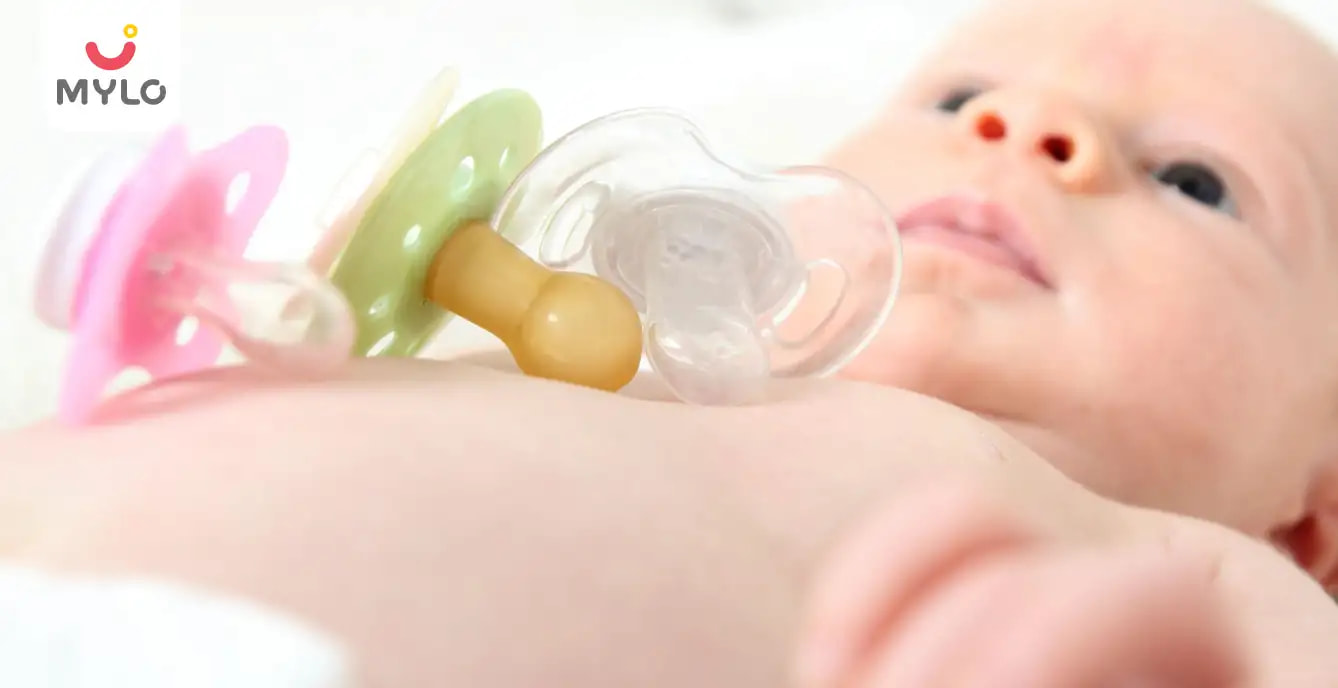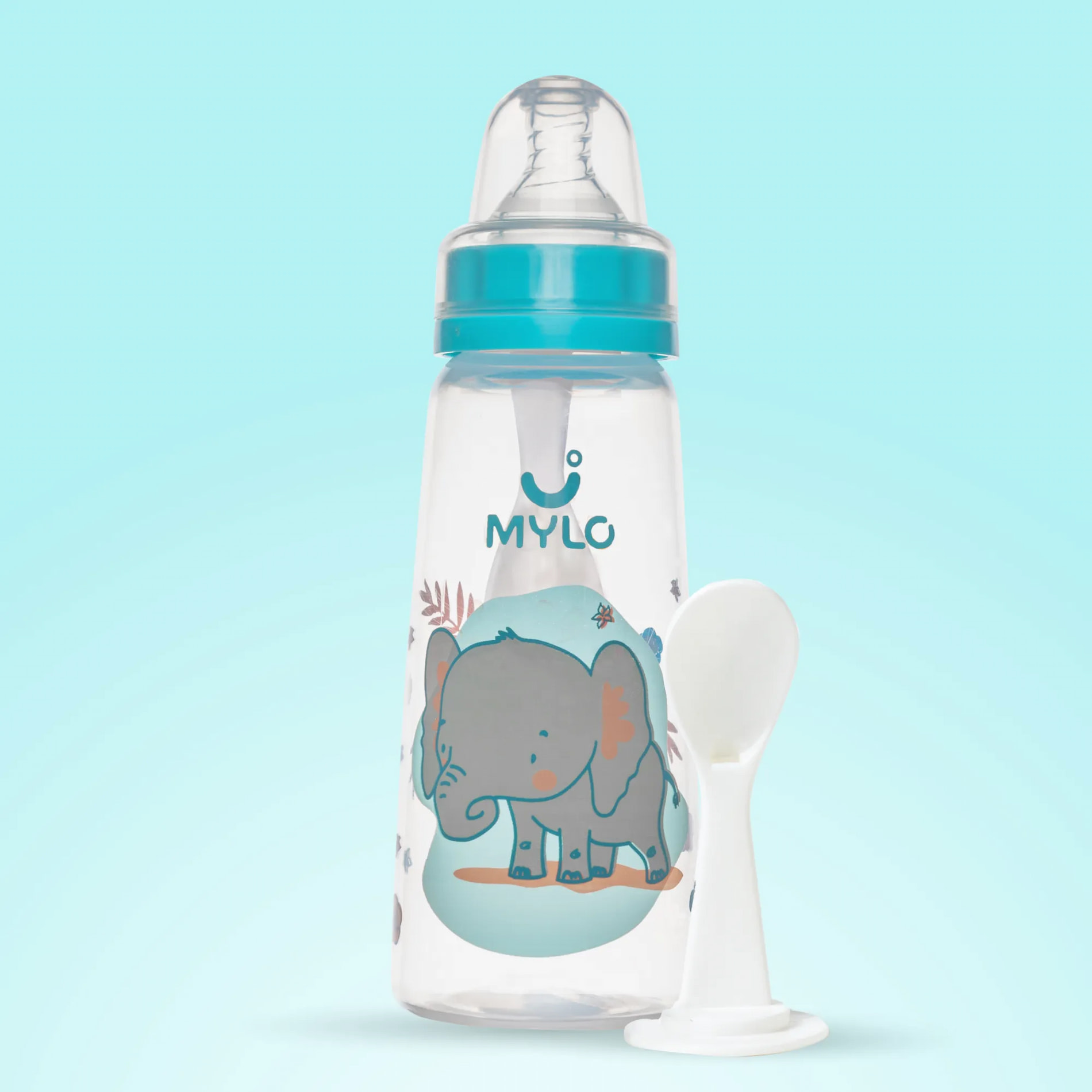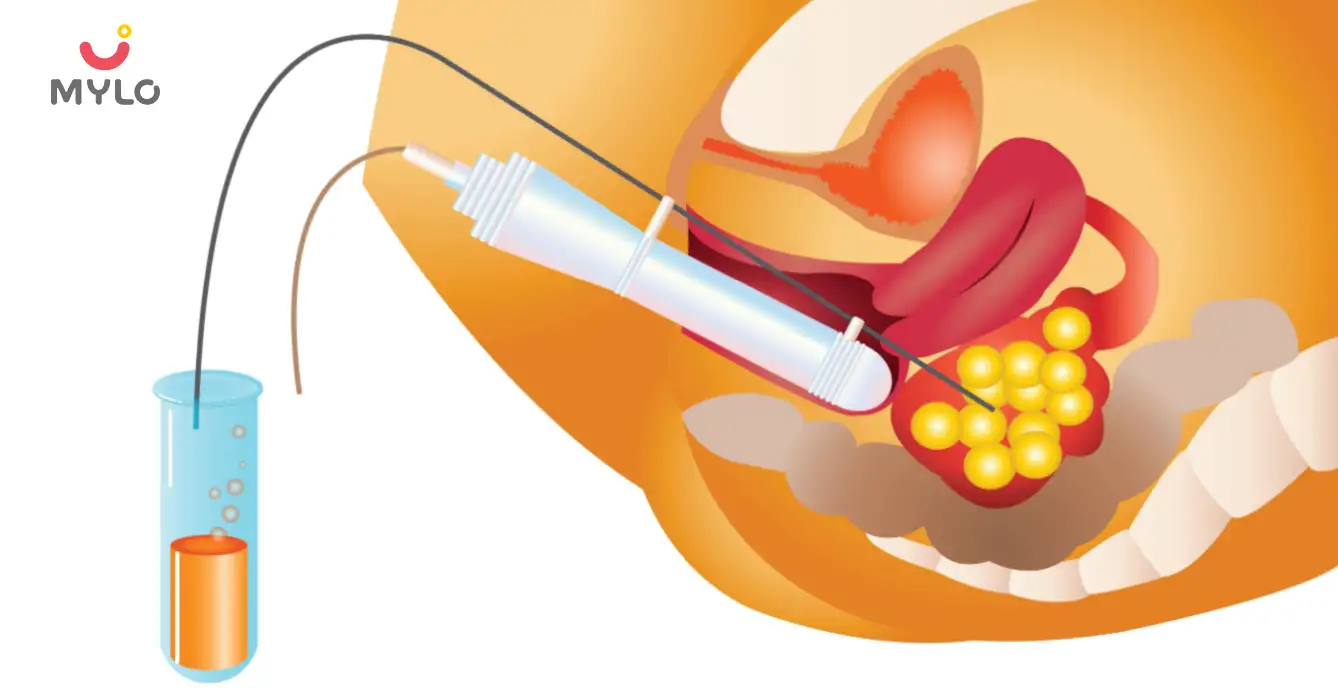Home

Breastfeeding & Lactation

Nipple Confusion: How to Identify and Address It
In this Article

Breastfeeding & Lactation
Nipple Confusion: How to Identify and Address It
Updated on 21 June 2023
As a new parent, you eagerly embrace the joys and challenges of nurturing your little one. One aspect that often arises is the concept of nipple confusion, a term that may leave you perplexed. Nipple confusion refers to the potential difficulties a baby may encounter when transitioning between breastfeeding and bottle feeding.
In this article, we will explore the phenomenon of nipple confusion, its causes, and practical strategies to identify and address it, empowering you to navigate this common hurdle confidently and provide the best feeding experience for your baby.
What is Nipple Confusion?
Nipple confusion refers to the challenge a baby may face when switching between different types of nipples, such as those of a breast and a bottle. Babies naturally develop other sucking techniques for breastfeeding and bottle feeding, and nipple confusion can occur when these techniques become incompatible.
This confusion can lead to latching, feeding difficulties, and frustration for both the baby and the parent. Understanding nipple confusion signs is essential for parents to provide appropriate support and address feeding challenges their baby may encounter.
How Common is Nipple Confusion in Newborns?
The prevalence of nipple confusion in newborns can vary; all infants do not experience it. While nipple confusion is a recognized phenomenon, it is difficult to determine the exact percentage of newborns affected.
Some babies may adapt quickly to different feeding methods without experiencing any confusion. In contrast, others may exhibit signs of nipple confusion. Factors such as the baby's temperament, feeding habits, and the timing of introducing different nipples can contribute to the likelihood of nipple confusion.
What are the Signs of Nipple Confusion?
Nipple confusion signs can vary from one baby to another, but here are some common indicators to watch out for:
1. Difficulty latching
Babies experiencing nipple confusion may struggle to latch onto the breast properly. They may have trouble opening their mouths wide or maintaining a secure latch, leading to ineffective breastfeeding.
2. Frustration during feeding
Babies with nipple confusion may display frustration, agitation, or irritability during feeding sessions. They may pull away from the breast or bottle, cry, or exhibit signs of discomfort.
3. Preference for one nipple type
If a baby becomes accustomed to either breastfeeding or bottle feeding and then refuses the other method, it could be a sign of nipple confusion.
4. Inconsistent feeding patterns
Nipple confusion in newborns can disrupt a baby's feeding patterns. They may exhibit unreliable or inefficient feeding, taking longer than usual to feed, or showing signs of hunger shortly after a feeding session.
5. Weight gain issues
If a baby consistently struggles to feed effectively due to nipple confusion, it can lead to inadequate milk intake and poor weight gain. Monitoring your baby's weight gain with regular check-ups can help identify any feeding challenges.
You may also like: Feeding bottle or sipper: Which is better for your baby?
How to Avoid Nipple Confusion in Newborns?
To help minimize the occurrence of nipple confusion in newborns, here are some strategies to consider:
1. Establish breastfeeding first:
If you plan to breastfeed, it is generally recommended to establish a solid breastfeeding routine before introducing bottles or pacifiers.
2. Introduce bottle-feeding techniques gradually:
When introducing bottle-feeding, consider using paced bottle-feeding techniques that mimic breastfeeding. This includes holding the baby upright, using a slow-flow nipple, and allowing the baby to control the feeding pace.
3. Choose breastfeeding-friendly bottles and nipples:
Opt for bottles and nipples designed to support breastfeeding, such as those with a broad base and shape closely resembling the breast.
4. Seek guidance from a lactation consultant:
Consulting with a lactation consultant can provide valuable support and advice on breastfeeding techniques, ensuring proper latch and positioning.
5. Practice skin-to-skin contact:
Skin-to-skin contact promotes bonding and helps establish a strong breastfeeding relationship. Skin-to-skin contact before and during feeding can enhance the baby's breastfeeding experience and reduce the likelihood of nipple confusion.
How to Select the Best Bottles to Avoid Nipple Confusion?
When selecting bottles to minimize the risk of nipple confusion, consider the following factors:
1. Nipple shape and flexibility: Look for bottles with nipples that closely mimic the shape, texture, and flexibility of a mother's breast. Nipples with a broad base and a rounded, elongated shape are often recommended.
2. Slow-flow nipples: Opt for bottles with slow-flow nipples to promote a paced feeding experience. Slow-flow nipples require the baby to actively suck and mimic the natural flow of breast milk, reducing the likelihood of the baby preferring the faster flow of a bottle over breastfeeding.
3. Anti-colic features: Bottles with anti-colic features, such as venting systems or air vents, can help reduce air ingestion during feeding.
4. Wide-neck bottles: Wide-neck bottles are easier to clean and can provide a more comfortable grip during feeding. They also allow for an easier transition between breastfeeding and bottle feeding, as the wider shape resembles the breast.
5. Material: Consider the fabric of the bottle. Options include glass, silicone, or BPA-free plastic. Choose a material that is safe, durable, and easy to clean.
Consulting with other parents, seeking recommendations from healthcare professionals or lactation consultants, and reading reviews can also provide helpful insights into selecting the best bottles to avoid nipple confusion.
You may like : How to Get Rid of Flat Nipples to Breastfeed Your Baby Effectively
FAQs
1. Do all babies get nipple confusion?
Not all babies experience nipple confusion. While nipple confusion can occur in some infants, it is not a universal issue. The likelihood of nipple confusion varies among babies, depending on individual temperament, feeding habits, and the timing of introducing different nipples.
2. How do I get my baby out of Nipple Confusion?
To get your baby out of nipple confusion, prioritize breastfeeding by offering the breast as the primary feeding method, seek guidance from a lactation consultant for personalized support, and consider alternative feeding methods such as cup feeding or finger feeding to help the baby transition away from bottle nipples. Patience and persistence are vital in helping your baby re-establish a successful breastfeeding routine.
Closing Thoughts
Navigating nipple confusion can be a challenging experience for parents, but by understanding the signs of nipple confusion, taking preventative measures, seeking guidance from lactation consultants, and knowing about the best bottles to avoid nipple confusion, parents can help their babies transition smoothly between breastfeeding and bottle feeding.
References
1. Neifert, M., Lawrence, R., & Seacat, J. (1995). Nipple confusion: Toward a formal definition. The Journal of Pediatrics, 126(6), S125–S129.
2. Zimmerman, E., & Thompson, K. (2015). Clarifying nipple confusion. Journal of Perinatology, 35(11), 895–899.

2-in-1 Baby Feeding Bottle (Elephant) - 250 ml
BPA Free with Anti-Colic Nipple & Spoon | Feels Natural Baby Bottle | Easy Flow Neck Design
₹ 171

4.3
(8562)


4072 Users bought



Written by
Madhavi Gupta
Dr. Madhavi Gupta is an accomplished Ayurvedic doctor specializing in Medical content writing with an experience of over 10 years.
Read MoreGet baby's diet chart, and growth tips

Related Articles
Related Questions
Hello frnds..still no pain...doctor said head fix nhi hua hai..bt vagina me pain hai aur back pain bhi... anyone having same issues??

Kon kon c chije aisi hai jo pregnancy mei gas acidity jalan karti hain... Koi btayega plz bcz mujhe aksar khane ke baad hi samagh aata hai ki is chij se gas acidity jalan ho gyi hai. Please share your knowledge

I am 13 week pregnancy. Anyone having Storione-xt tablet. It better to have morning or night ???

Hlo to be moms....i hv a query...in my 9.5 wk i feel body joint pain like in ankle, knee, wrist, shoulder, toes....pain intensity is high...i cnt sleep....what should i do pls help....cn i cosult my doc.

Influenza and boostrix injection kisiko laga hai kya 8 month pregnancy me and q lagta hai ye plz reply me

Related Topics
RECENTLY PUBLISHED ARTICLES
our most recent articles

Stem Cell Banking
All About Stem Cells, Their Usage and Potential Effectiveness in the Treatment of Different Diseases

Diabetes during Pregnancy
How to Manage Your Gestational Diabetes? Find 5 Easy Ways to Maintain the Sugar Level in Pregnancy and Stay Healthy!

Breast Milk
How to Get Rid of Flat Nipples to Breastfeed Your Baby Effectively

In Vitro Fertilization (IVF)
The Ultimate Guide to Egg Retrieval: Everything You Need to Know

Sex Life
Loss of Libido: Causes, Symptoms, and Treatment

Leisure
Top 10 Romantic Movies to Watch on Netflix in 2023
- Top 10 Romantic Shows to Watch on Netflix in 2023
- Top 10 Thriller Movies to Watch on Netflix in 2023
- Top 10 Thriller Shows to Watch on Netflix in 2023
- Azoospermia and Male Fertility: What Every Man Should Know
- Premature Ovarian Failure: How it Affects Female Fertility and What You Can Do About It
- Erectile Dysfunction: What Causes It and How to Treat It
- Positive Signs After Embryo Transfer: What to Look Out For
- Sleeping Position After IVF & Other Precautions That Can Boost Your Chances of Success
- Disadvantages of Breastfeeding No One Tells You About
- IVF Failure Reasons: Exploring the Challenges Couples Face with Infertility
- Putrajeevak Beej: The Ancient Seed for Modern Health and Fertility
- Shivlingi Beej: The Ultimate Guide to Boosting Your Fertility Naturally
- Milk Thistle in Ayurveda: Unlock The Healing Potential and Health Benefits of This Herb
- Orchidopexy: All You Need to Know About Its Procedure, Risks, and Recovery


AWARDS AND RECOGNITION

Mylo wins Forbes D2C Disruptor award

Mylo wins The Economic Times Promising Brands 2022
AS SEEN IN
















- Mylo Care: Effective and science-backed personal care and wellness solutions for a joyful you.
- Mylo Baby: Science-backed, gentle and effective personal care & hygiene range for your little one.
- Mylo Community: Trusted and empathetic community of 10mn+ parents and experts.
Product Categories
baby carrier | baby soap | baby wipes | stretch marks cream | baby cream | baby shampoo | baby massage oil | baby hair oil | stretch marks oil | baby body wash | baby powder | baby lotion | diaper rash cream | newborn diapers | teether | baby kajal | baby diapers | cloth diapers |








